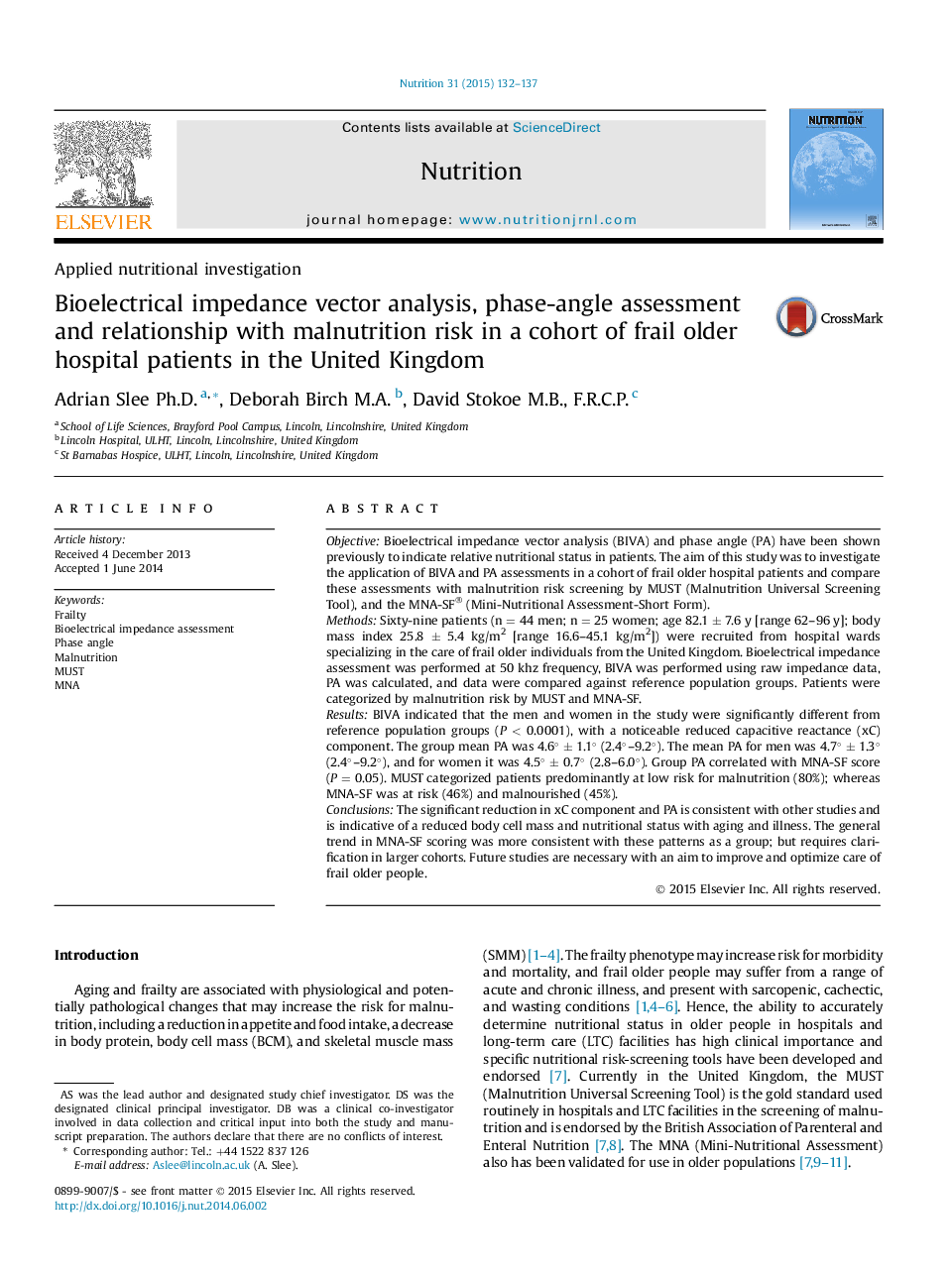| کد مقاله | کد نشریه | سال انتشار | مقاله انگلیسی | نسخه تمام متن |
|---|---|---|---|---|
| 6089509 | 1208546 | 2015 | 6 صفحه PDF | دانلود رایگان |
ObjectiveBioelectrical impedance vector analysis (BIVA) and phase angle (PA) have been shown previously to indicate relative nutritional status in patients. The aim of this study was to investigate the application of BIVA and PA assessments in a cohort of frail older hospital patients and compare these assessments with malnutrition risk screening by MUST (Malnutrition Universal Screening Tool), and the MNA-SF® (Mini-Nutritional Assessment-Short Form).MethodsSixty-nine patients (n = 44 men; n = 25 women; age 82.1 ± 7.6 y [range 62-96 y]; body mass index 25.8 ± 5.4 kg/m2 [range 16.6-45.1 kg/m2]) were recruited from hospital wards specializing in the care of frail older individuals from the United Kingdom. Bioelectrical impedance assessment was performed at 50 khz frequency, BIVA was performed using raw impedance data, PA was calculated, and data were compared against reference population groups. Patients were categorized by malnutrition risk by MUST and MNA-SF.ResultsBIVA indicated that the men and women in the study were significantly different from reference population groups (P < 0.0001), with a noticeable reduced capacitive reactance (xC) component. The group mean PA was 4.6° ± 1.1° (2.4°-9.2°). The mean PA for men was 4.7° ± 1.3° (2.4°-9.2°), and for women it was 4.5° ± 0.7° (2.8-6.0°). Group PA correlated with MNA-SF score (P = 0.05). MUST categorized patients predominantly at low risk for malnutrition (80%); whereas MNA-SF was at risk (46%) and malnourished (45%).ConclusionsThe significant reduction in xC component and PA is consistent with other studies and is indicative of a reduced body cell mass and nutritional status with aging and illness. The general trend in MNA-SF scoring was more consistent with these patterns as a group; but requires clarification in larger cohorts. Future studies are necessary with an aim to improve and optimize care of frail older people.
Journal: Nutrition - Volume 31, Issue 1, January 2015, Pages 132-137
